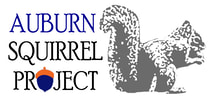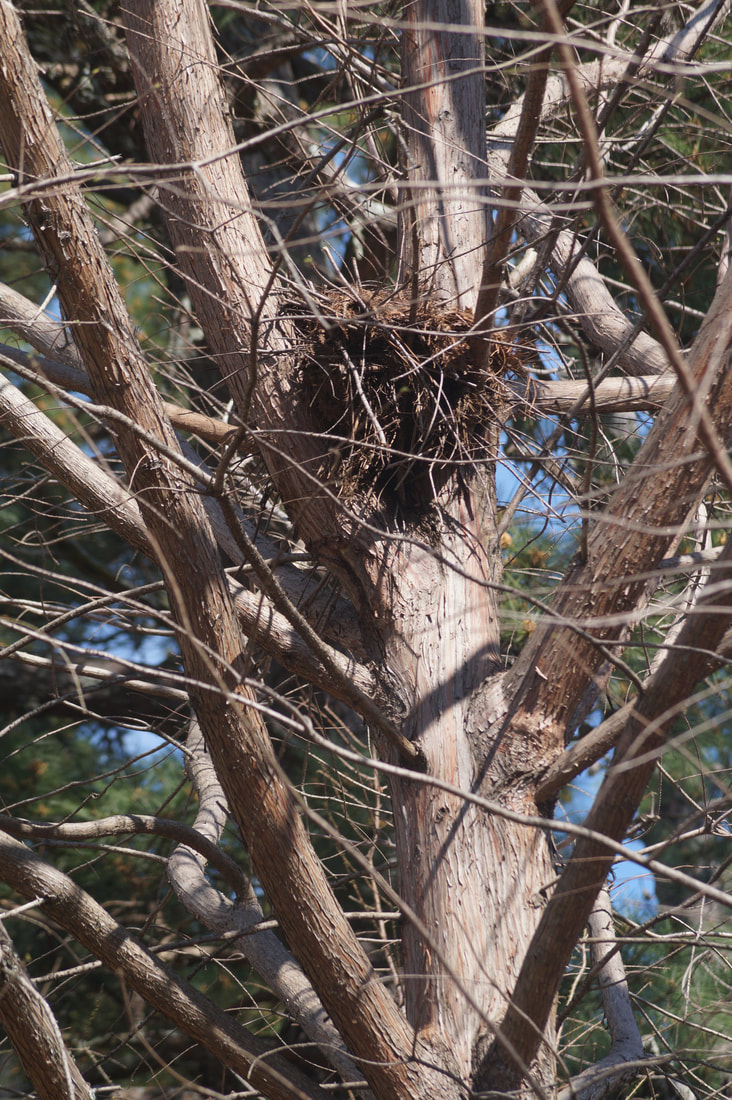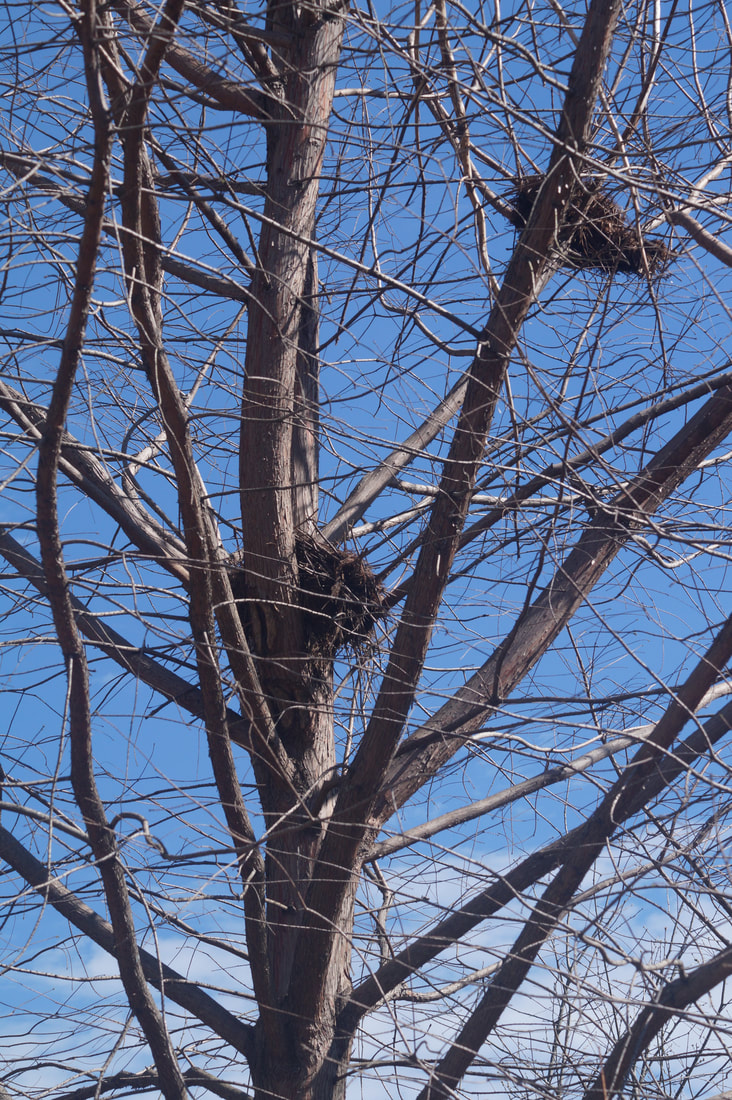Common Squirrel Behaviors
For this study, we have provided general descriptions of the most common behaviors shown by eastern gray squirrels. Individual animals will have different personalities and many may not act exactly as described here, so this is a guideline for helping categorize behaviors while observing a squirrel.
Scatterhoarding
There are 2 main scatterhoarding behaviors: caching (initial storing) and recovery (relocation of stored food).
Caching: squirrel locates a food item to store, carries food in mouth to a spot where squirrel digs a hole with forepaws, arches body over the hole, thrusts body to push food into the ground, covers with dirt with forepaws. The squirrel may also store a food item by hiding it under leaf litter or another spot without burial. For the purposes of this study caching always ends in burial or hiding of a food item.
Recovery: squirrel locates buried or hidden nut with foraging behavior, may dig with forepaws, pulls nut out of ground using mouth
- tail may be held straight out or slightly arched
- after recovering the nut, may turn it around a few times in forepaws or mouth
- may flick head after placing recovered nut in mouth
|
After recovering the food, the squirrel must decide what to do next. This results in recaching, eating, or unknown behaviors.
|
This video is an good example of recovery and recaching behavior.
|
Foraging
Foraging behavior occurs when a squirrel is looking for food to eat or scatterhoard. This behavior may occur in the tree or on the ground and typically ends with the squirrel eating a food item (consumption behavior).
- On ground: may start with squirrel walking forward with nose to ground, may move head side to side, tail generally held out straight, may stop to sniff ground
- In tree: squirrel seen moving straight for a food source without hesitation, may grab and chew off small branch with flowers or catkins to eat
|
|
|
A subcategory of foraging behavior, consumption behavior occurs directly after foraging behavior. It is literally when the squirrel finds something to eat and is eating, or consuming, the food item. Squirrels eat many different things depending on the season so you could see them eating nuts or other seeds, flowers, pollen catkins, mushrooms, etc.
- squirrel seen eating food that was not dug up first (can be found by spending a second or two with nose in leaf litter and not be considered recovered food)
|
|
|
Resting
This behavior generally occurs in the trees or under cover where the squirrel is safe from predators.
- squirrel is still but not tense/alert, is sitting or laying down, usually in a drey (stick nest) or on a tree branch.
- forepaws may but held forward underneath the upper body
- tail is held in a relaxed, still position
- differentiated from alert behavior because the squirrel is not obviously watching or listening for predators.
|
|
|
Squirrels can be resting on the ground, in a tree, or in a drey in a tree. A drey is a nest made from sticks and leaves that the squirrel built to provide more protection while they rest. They will also use dreys to raise their young in the spring.
Grooming
Squirrels must groom to rid themselves of pesky fleas and keep themselves clean. This behavior is very similar to grooming by our pet cats and dogs.
- scratching body with hind or forefoot, using mouth to lick or bite at own body
|
|
|
Vocalizing
Squirrels vocalize to communicate with each other and predators.
- any kind of noise made by the squirrel when it is not directly interacting with another squirrel (such as squealing while wrestling with another squirrel, this would be considered an interaction)
- teeth chattering, squeaking, gnawing noises
- tail may be making rapid jerking movements
Travel
Travel is when squirrels move from place to place without foraging or interaction with another animal.
- may occur on ground or in tree; when on ground, head will be up while moving, not close to ground
- may have food in mouth, if the squirrel does not stop to eat or bury while traveling
- Note: This video also shows 2 quick instances of alert behavior. Can you spot them?
Alert
Alert behavior is shown when a squirrel is looking for or aware of a predator or another squirrel.
- standing or crouching position, attentive posture, may have one or both paws held against chest
- no vocalization for behavior to be categorized as alert
- usually will sit in this position for several seconds at a time
|
|
|
Interaction
Squirrels interact with other squirrels for mating, fighting, or friendly grooming.
- any interaction with another squirrel, no matter the outcome or cause
- may include wrestling, chasing, nest sharing, grooming
*Descriptions of most behaviors were adapted from previous studies.*
- Thompson and Thompson 1980: caching, recovery, foraging
- Allen and Aspey 1987: vocalizing, interaction
- Thompson 1978: vocalizing, interaction
- Koprowski 1996: interaction



